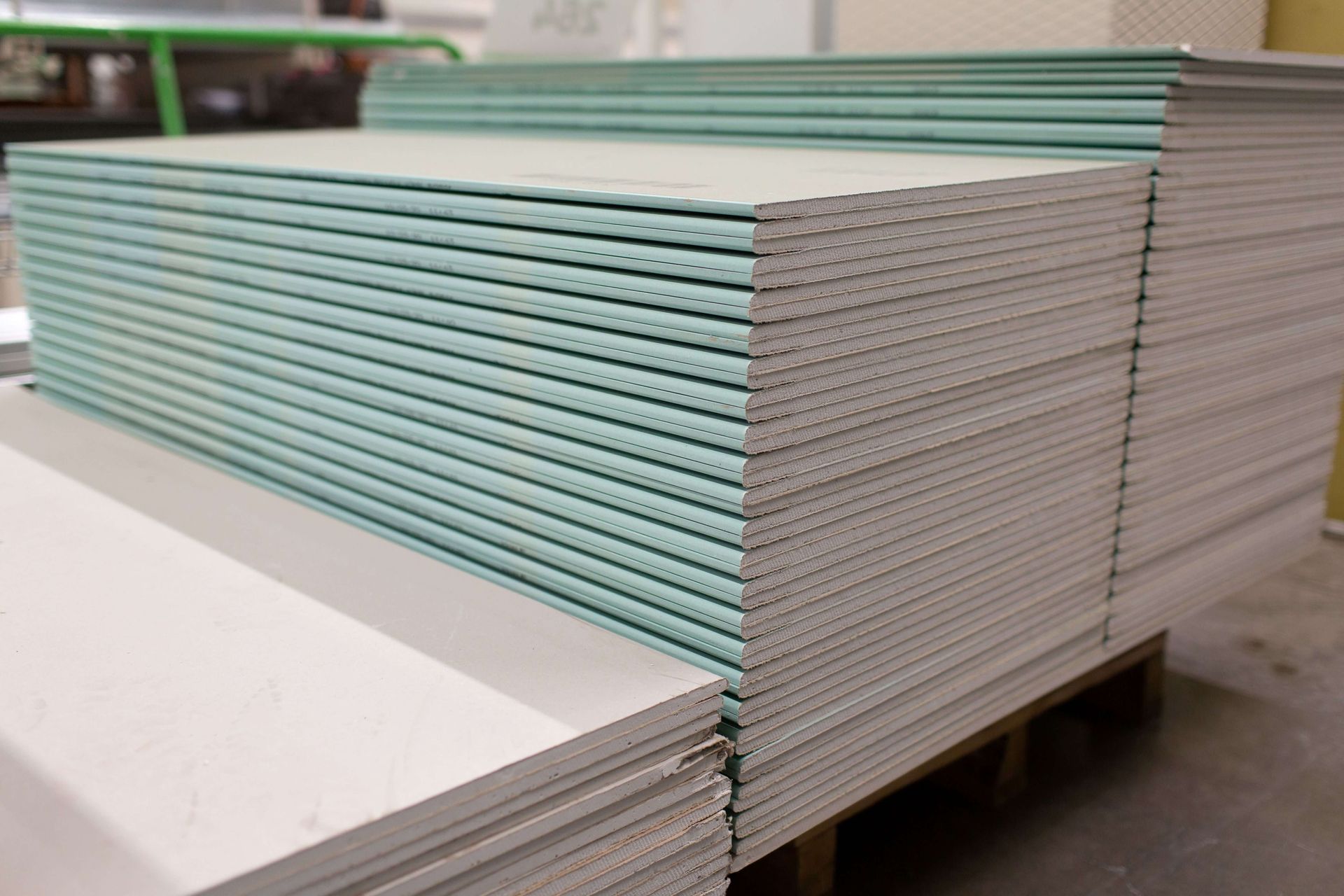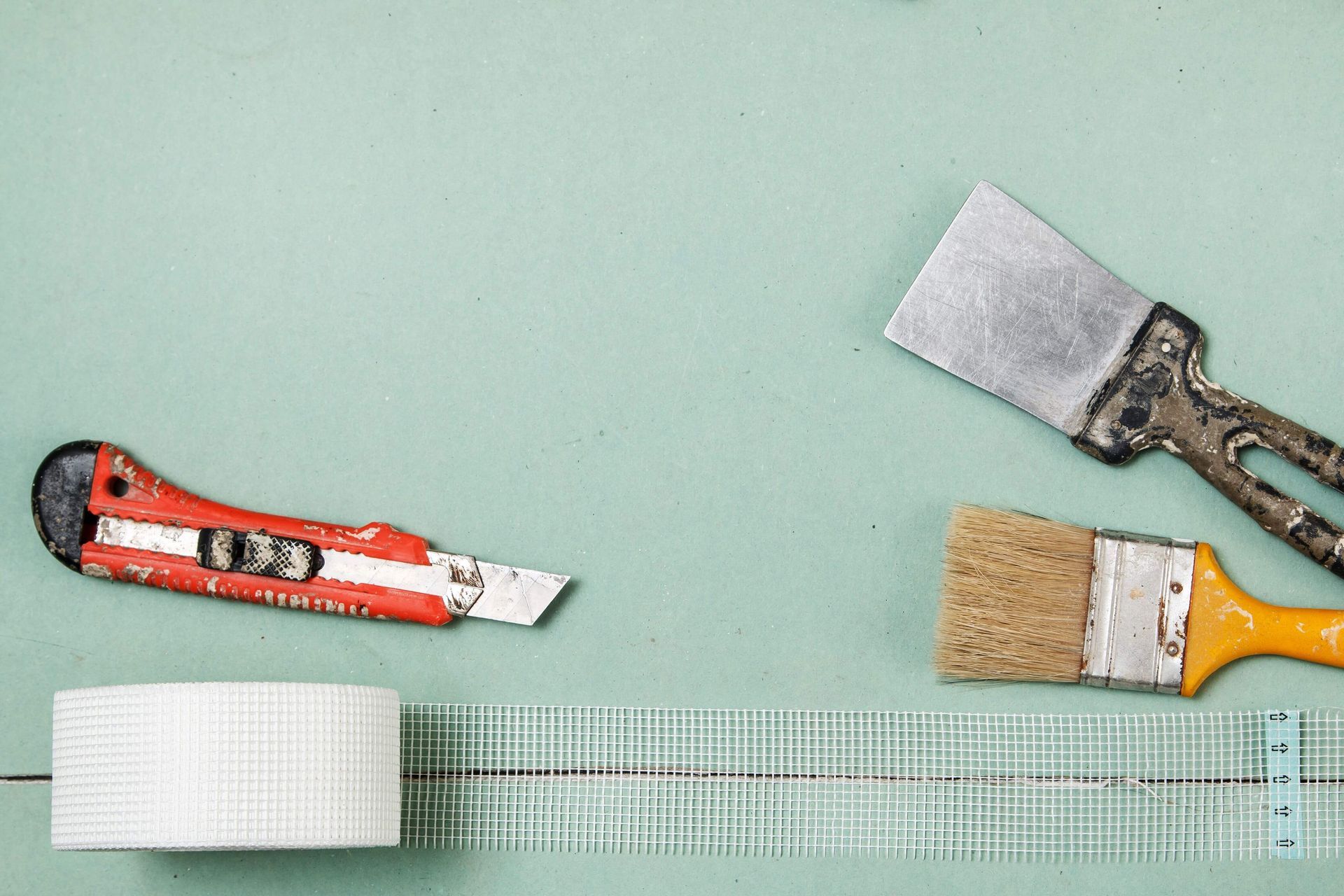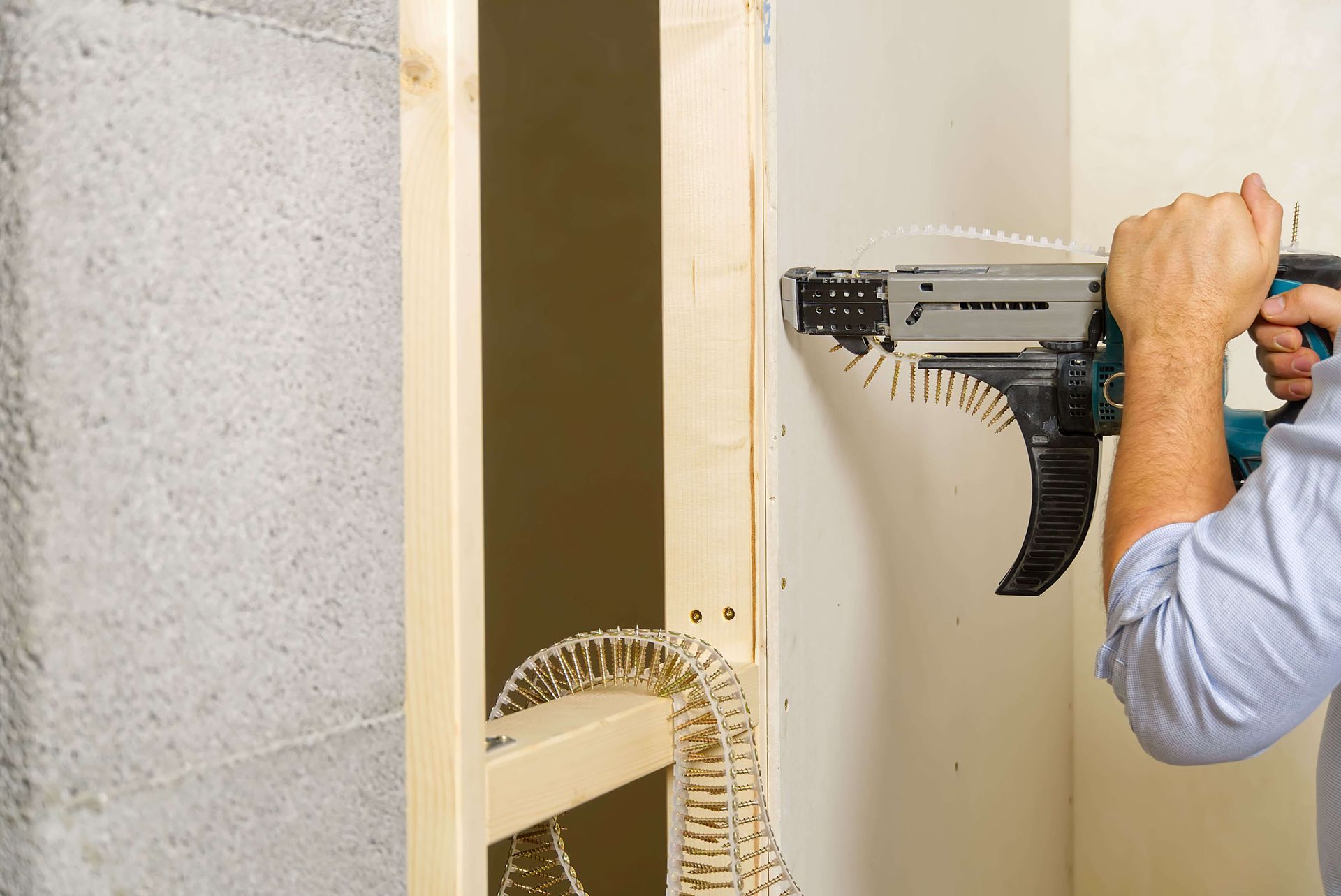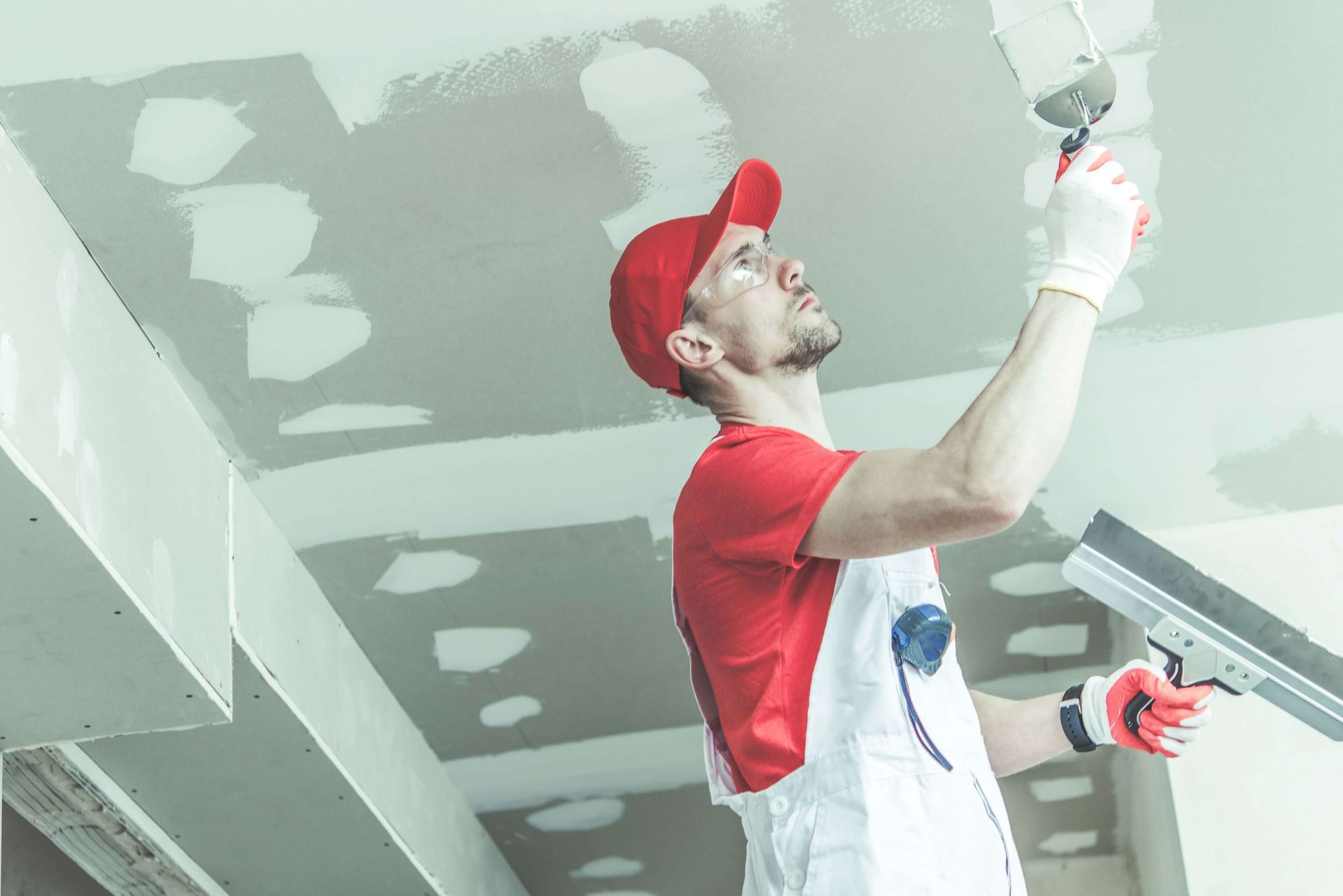The Ultimate Guide to Choosing the Right Drywall for Your Project
Follow this guide for choosing the right drywall for your home or business

Drywall, also known as sheetrock, plasterboard, gypsum board, or wallboard, is a panel made of gypsum plaster. It is a popular interior wall and ceiling covering material used in homes, offices, and other buildings. Drywall is usually composed of a gypsum core sandwiched between two pieces of paper, creating a lightweight panel that can be installed quickly and easily.Drywall is used as a wall and ceiling covering material in residential and commercial buildings. It is preferred over other materials such as plaster and lath because it is easy to install, provides insulation, and is fairly inexpensive. In addition, drywall is fire resistant and can help reduce sound transmission.Installing drywall is a relatively simple process. The panels are cut to size and then nailed or screwed to the wall or ceiling frame. The seams between the panels are then taped and finished with joint compound. The joint compound is then sanded, primed, and painted.Drywall is an affordable and durable wall and ceiling covering material that is easy to install and provides insulation and fire resistance. It is the preferred material for most residential and commercial construction projects.
Benefits and Drawbacks of Different Types of Drywall
Drywall is a type of wallboard made of mineral gypsum, used to make interior walls and ceilings. It is a popular choice for many construction projects due to its affordability and availability. However, there are different types of drywall on the market, each with its own benefits and drawbacks. Gypsum Drywall: Gypsum drywall is the most common type of drywall used in construction projects. It is made of a mineral gypsum core sandwiched between two layers of paper. Gypsum drywall is durable, cost-effective, and easy to work with. It is also fire-resistant, making it a great choice for areas with high fire risk. The downside of gypsum drywall is that it is not waterproof, so it is not suitable for areas with high moisture or humidity. Green Board Drywall: Green board drywall is a type of gypsum drywall that has been treated to be more moisture-resistant than standard drywall. It has a green paper finish that acts as a barrier to moisture, making it ideal for bathrooms, kitchens, and other areas that may be exposed to moisture. Green board drywall is more expensive than standard drywall, and it is also harder to find in stores. However, it is more durable and offers better protection against moisture. The type of drywall you choose for your project will depend on the specific needs of the project. Life expectancy, cost, availability, and appropriateness for the project are all important factors to consider when choosing the right drywall for your project.
Gypsum Drywall
Gypsum drywall is the most common type of drywall used in residential and commercial construction today. It is made of a gypsum core that is covered by a paper or fiberglass facing. In terms of cost, gypsum drywall is usually the most affordable option, making it a popular choice.Gypsum drywall is also very easy to work with, and can be cut and installed with minimal effort. It is also fire-resistant, which is a major benefit for safety purposes. Additionally, it is one of the most durable types of drywall, with a life expectancy of up to 50 years. The major drawback of gypsum drywall is that it is prone to mold and mildew if it is exposed to moisture. This means that, if you are using it in a bathroom or in a basement, it is important to ensure that it is properly sealed and insulated to prevent moisture infiltration. Additionally, gypsum drywall is more difficult to repair than other types of drywall, so if it does become damaged, it may require more work to fix.
Green Board Drywall
Green board drywall is a type of drywall that is best used in wet areas, such as bathrooms, laundry rooms, and kitchens. It is made from gypsum board that is covered with a green paper facing, and contains a wax additive that makes it more resistant to moisture. The benefits of green board drywall include its resistance to moisture and mold, its fire resistance, and its availability in a variety of thicknesses. It is also relatively easy to install, compared to other types of drywall.On the downside, green board drywall is more expensive than regular drywall, and has a shorter life expectancy. It is also prone to cracking and warping, especially in areas with high humidity.When choosing green board drywall for your project, it is important to consider the life expectancy and cost of the product. Green board drywall typically has a shorter life expectancy than regular gypsum drywall, so you may want to opt for a higher quality product to ensure it lasts as long as possible. Additionally, the cost of green board drywall is typically higher than regular drywall, so you should factor this into your budget.You should also consider the availability of green board drywall in your area, as well as its appropriateness for the project. You should make sure that you use green board drywall in areas where it is necessary, such as wet or highly humid areas. Additionally, you should make sure that the green board drywall you choose is available in your area before you purchase it. In conclusion, green board drywall is a good choice for areas that are prone to moisture and humidity, but you should consider the life expectancy, cost, availability, and appropriateness of the product before you purchase it.
Factors to Consider When Choosing the Right Drywall
When selecting the right drywall for a project, there are several factors that must be taken into consideration. The life expectancy of the drywall is one of the most important factors to consider. Drywall is typically rated to last anywhere between 15 to 20 years, depending on the type of drywall being used and the environment it is placed in. While some drywall may last longer than this, it is important to understand the life expectancy of the drywall before making a purchase. The cost of the drywall is another important factor to consider. Drywall comes in a variety of styles, sizes, and thicknesses, and each of these factors can affect the cost of the drywall. It is important to compare the cost of different types of drywall and select the one that best meets your budget and needs. The availability of the drywall is also an important factor to consider. Different types of drywall may only be available in certain areas, and it is important to know the availability of the drywall before making a purchase. It is also important to consider the ability to obtain the drywall in the future, as some types of drywall may become harder to find over time. The appropriateness of the drywall for the project is also an important factor to consider. Different types of drywall are designed for different types of projects, and it is important to select the drywall that is best suited for the project. For example, if the project is in a wet environment, then green board drywall may be the best choice, while for a dry environment, gypsum drywall may be the best choice. When selecting the best drywall for a project, it is important to consider all of the factors listed above. By carefully considering these factors, it is possible to select the best drywall for the job, ensuring that the project will last for many years to come.
Life Expectancy
When selecting the right drywall for a project, it is important to consider the life expectancy of the material. The life expectancy of drywall is affected by a variety of factors, such as the quality of the material, the environment it is exposed to, and how the drywall is installed. High-quality drywall is generally more expensive, but it also has a longer lifespan than lower quality drywall. High-quality drywall is typically made from gypsum and is more resistant to moisture and mold. In addition, high-quality drywall can also be more resistant to fire, making it an excellent choice for projects where safety is a priority. The environment in which the drywall is installed is also an important factor in determining its life expectancy. Drywall that is installed in a damp environment is more likely to be affected by mold and mildew, which can significantly reduce its lifespan. Similarly, drywall that is exposed to high levels of humidity may be more prone to warping or cracking. Finally, the installation of the drywall is also an important factor in determining its life expectancy. Poorly installed drywall may be more prone to warping or cracking, and may have a shorter lifespan. Professional installation may be more expensive, but it can ensure that the drywall is installed correctly and that it will last for many years. When selecting the right drywall for a project, it is important to consider the life expectancy of the material. Quality, environment, and installation are all factors that can affect the life expectancy of drywall, and should be taken into consideration when making a selection.
Cost
The cost of drywall can vary greatly depending on the type and size of the project. For small DIY projects, the cost of drywall can be very affordable, as it is often sold in 4’x8’ sheets that are relatively inexpensive. For larger projects, the cost of drywall can increase significantly, as the size and complexity of the project increase. When purchasing drywall for a larger project, it is important to be aware of the labor costs associated with the installation of the drywall. Professional drywall installers typically charge an hourly rate for labor, and can charge anywhere from $15 to $30 per hour depending on the scope of the project. It is important to factor in these labor costs when calculating the total cost of the project. The cost of the drywall itself can also vary depending on the type of drywall being used. Gypsum drywall is typically the most affordable type of drywall, while green board drywall is typically more expensive. The size and thickness of the drywall sheets can also affect the cost, as thicker drywall is usually more expensive, and drywall that is sold in larger sheets is usually more expensive than drywall sold in smaller sheets. When selecting drywall for a project, it is important to consider the cost, as this can have a major impact on the overall budget of the project. It is important to do research to determine the most cost-effective option for the project, and to find the best deal on the materials that are needed. It is also important to factor in the labor costs associated with the installation of the drywall, as this can significantly increase the cost of the project.
Availability
When selecting drywall for a project, it is important to consider availability. Generally speaking, there is a wide variety of drywall types available in most markets, so there should be no trouble finding the type of drywall needed for a project. Gypsum drywall is the most common type and is usually easy to find in most stores or home improvement centers. Green board drywall, while not as common, is usually available in most areas as well. Another factor to consider is the availability of accessories. Drywall requires an assortment of accessories such as joint compound, taping knives, screws, and tape to install properly. While most hardware stores should carry these items, it is important to double check and make sure the particular accessories needed for a project are available. If the type of drywall or accessories needed for a project are not available in the local market, it may be necessary to order them online or from a specialty store. This can add additional cost and time to the project, so it is important to take this into account when selecting drywall. In addition, it is important to consider the availability of skilled labor in the area. Drywall installation can be a tricky job, so it is important to make sure there is someone available to do the installation properly. If skilled labor is not available, it may be necessary to hire a contractor to complete the installation. Considering the availability of drywall and accessories, as well as skilled labor, is an important factor when selecting the right drywall for a project. Taking the time to research and plan ahead can help ensure the project is completed on time and on budget.
Appropriateness for the Project
When considering the appropriateness of a particular type of drywall for your project, there are a number of factors to consider. Firstly, you should consider the climate and environment of the area in which your project will be located. Different types of drywall are better suited for different climates and environments. For instance, if your project is located in an area with high levels of humidity, then you may be better off opting for a type of drywall that is designed to resist moisture. Likewise, you will need to consider the fire resistance of the drywall. Different types of drywall will have varying levels of fire resistance, so it is important to choose a type that is appropriate for the area in which the project will be located. For instance, if the project is located in an area with high levels of fire risk, then you may want to opt for drywall that is designed for fire resistance. Additionally, you should consider the soundproofing properties of the drywall. Different types of drywall will be better suited for soundproofing, so it is important to choose a type that is appropriate for the area in which the project will be located. For instance, if the project is located in an area with high levels of noise pollution, then you may want to opt for drywall that is designed for soundproofing. Finally, you should consider the aesthetic properties of the drywall. Different types of drywall will have different aesthetics, so it is important to choose a type that is appropriate for the area in which the project will be located. For instance, if the project is located in an area with a particular aesthetic, then you may want to opt for drywall that is designed to match that aesthetic. In conclusion, when choosing the right type of drywall for your project, it is important to consider the climate and environment of the area in which the project will be located, the fire resistance of the drywall, the soundproofing properties of the drywall, and the aesthetic properties of the drywall. By doing so, you can ensure that you choose a type of drywall that is appropriate for the area in which the project will be located and that meets all of your project’s needs.
Conclusion
The right drywall can make all the difference in the quality of the end result. By understanding the different types of drywall, their benefits and drawbacks, and the factors you should consider when choosing the right drywall, you can make an informed decision and be confident that you’ve chosen the right drywall for your project. While there is no one-size-fits-all solution to selecting the right drywall, understanding the differences between the various types of drywall can help you identify the best option for your specific project. Whether you choose gypsum drywall, green board drywall, or another type, you can be sure that you’ve made an informed decision based on your project requirements and budget. By following the guidelines laid out in this guide, you can be confident that you’ve chosen the right drywall for your project. With the right drywall, you can ensure that your project is structurally sound and aesthetically pleasing for years to come.
Don't hesitate to talk with our Richmond drywall experts for help on your next drywall project. Give us a call 804-596-6255.
Get Instant Quote



